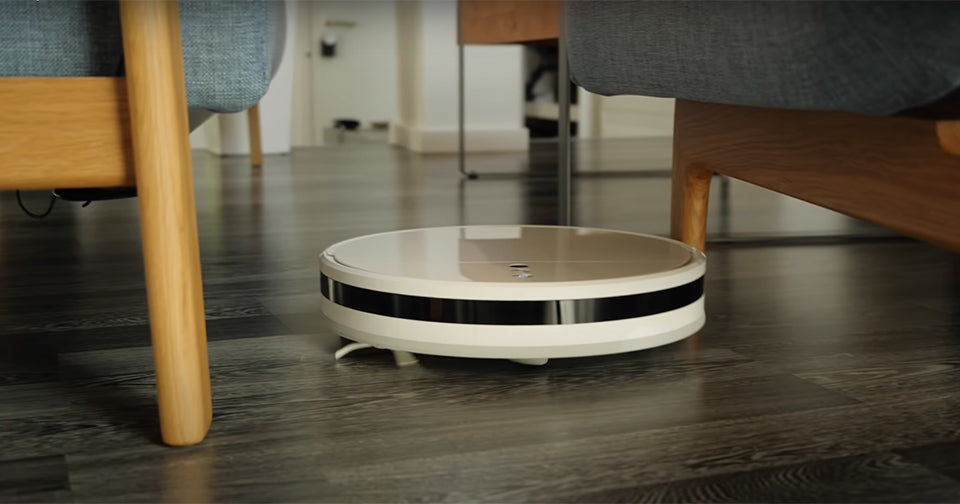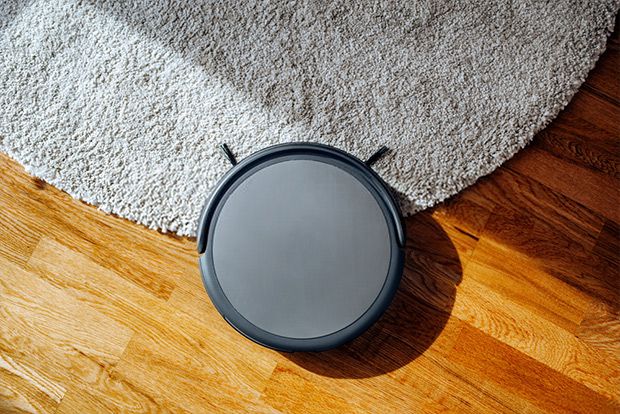How Do Robot Vacuums Map Your House?

Robot vacuums map your house by using a combination of sensors and onboard technology to navigate and remember the layout of your home. This mapping process allows the robot to efficiently clean your floors.
Robot vacuums have revolutionized the way we clean our homes by providing an automated and convenient solution. These advanced cleaning devices employ sophisticated mapping techniques to navigate and clean different areas of your house effectively. By incorporating a combination of sensors and onboard technology, robot vacuums create a detailed map of your home’s layout.
This mapping process allows the robot to efficiently maneuver around furniture, walls, and obstacles, enabling a thorough cleaning experience. We will explore the methodology behind how robot vacuums map your house and the benefits it brings to household cleaning routines. Understanding this technology can help you make an informed decision when considering a robot vacuum for your cleaning needs.
Understanding The Basics Of Robot Vacuum Mapping
Robot vacuums are intelligent devices that are designed to autonomously clean your home. These robots use advanced mapping technology to efficiently navigate and clean your house. The basic understanding of how robot vacuum mapping works is crucial for users. By exploring the technology behind robot vacuum mapping, you can gain insight into the key components necessary for effective cleaning.
These components include sensors that detect obstacles, cameras that capture images of the environment, and software algorithms that create a map of your house. With this map, the robot vacuum can determine the most efficient cleaning path and avoid unnecessary obstacles.
Understanding the basics of robot vacuum mapping will help you make the most of your cleaning device and keep your home effortlessly clean. So, let’s delve into the fascinating world of robot vacuum mapping technology.
The Role Of Sensors In Mapping Your House
Robot vacuums use a variety of sensors to map your house accurately. These sensors enable precise navigation, ensuring that every corner of your home is efficiently cleaned. Understanding the different types of sensors used in robot vacuums is crucial in comprehending how they create maps.
One common type of sensor is the infrared sensor, which helps the robot detect obstacles in its path. Another important sensor is the laser sensor, which scans the surroundings and measures distances to build a detailed map. Additionally, some robot vacuums use cameras or optical sensors to capture images and navigate accordingly.
These sensors work in harmony to create a map of your house, allowing the robot vacuum to move seamlessly from room to room and avoid obstacles efficiently. With the help of advanced technology, robot vacuums can map your house with great precision, ensuring a thorough and hassle-free cleaning experience.
Mapping Techniques Used By Robot Vacuums
Robot vacuums use Simultaneous Localization and Mapping (SLAM) techniques to map your house. These techniques combine lidar mapping technology for accurate navigation. By using lidar sensors, the robot vacuum creates a detailed map of your home, detecting obstacles and determining its position within the space.
The lidar sensors emit laser beams that bounce off objects in the surroundings, allowing the robot to measure distances and create a 3D map. This mapping process enables the robot vacuum to navigate efficiently and avoid collisions as it cleans your floors.
The SLAM algorithms also help the robot vacuum to update its map in real-time, taking into account any changes or movement of objects in the environment. With these advanced mapping techniques, robot vacuums can effectively clean your home while avoiding obstacles and providing efficient coverage.
Benefits Of Robot Vacuum Mapping
Robot vacuums map your house using advanced technologies to ensure efficient and thorough cleaning. With customizable mapping features, these smart devices offer personalized cleaning experiences. By creating efficient cleaning patterns, they cover every nook and cranny, leaving no dirt behind.
These patterns are designed to optimize their movement, ensuring maximum coverage and minimal overlap. As a result, you can sit back and relax, knowing that your floors are being cleaned thoroughly. The benefits of robot vacuum mapping extend beyond just convenience.
They save time and energy by navigating your house intelligently, reaching areas that are often forgotten by traditional vacuums. So say goodbye to the hassle of manual vacuuming and let robot vacuums do the work for you, efficiently and effectively.
Fine-Tuning Your Robot Vacuum’S Mapping
Robot vacuums map your house by utilizing virtual walls and boundaries. These features enable them to navigate your home efficiently, ensuring no area is left untouched. Additionally, you can fine-tune your robot vacuum’s mapping by editing, saving, and managing the created maps.
This allows you to optimize the cleaning process further. By adjusting the virtual walls and boundaries, you can effectively limit the areas where the robot vacuum should clean, preventing it from entering specific rooms or spaces. With this level of customization, you have greater control over the areas your robot vacuum can access.
Moreover, editing and saving maps ensures consistent cleaning patterns each time you use your robot vacuum. Overall, mapping features provide precision and convenience, making cleaning your home effortless and effective.

Credit: www.nytimes.com
Challenges And Limitations Of Robot Vacuum Mapping
Mapping a house with a robot vacuum is not without its challenges and limitations. Complex layouts, obstacles, and specific scenarios can pose difficulties. Achieving accuracy in mapping is crucial. The robot must navigate around furniture, traverse multiple rooms, and avoid potential hazards.
The mapping process requires careful consideration of the layout and obstacles. The robot needs to create an accurate representation of the house to navigate effectively. Without proper mapping, the robot may miss areas or repeatedly clean the same spots. Overcoming these challenges involves advanced algorithms, sensors, and mapping techniques.
Robot vacuum manufacturers constantly innovate to improve mapping capabilities, ensuring efficient and effective cleaning. By addressing the challenges and limitations, robot vacuums can provide homeowners with a convenient and automated cleaning solution.
Future Developments In Robot Vacuum Mapping
Robot vacuums use advanced mapping technologies to efficiently clean your house. These technologies are continuously evolving, with future developments focused on enhancing mapping algorithms for improved performance. These advancements aim to provide more accurate and precise mapping of your home, allowing the robot vacuum to navigate and clean with even greater efficiency.
As mapping algorithms continue to evolve, we can expect robot vacuums to become even smarter in understanding the layout of your house. This means they will be able to avoid obstacles, plan optimal cleaning paths, and effectively cover every corner of your home.
With the ongoing improvements in mapping technologies, the future of robot vacuum cleaning looks promising, offering more convenience and time-saving benefits for busy households.
Tips For Getting The Most Out Of Robot Vacuum Mapping
Robot vacuums have become increasingly popular for their ability to autonomously clean homes. One key feature that sets some models apart is mapping. By efficiently and effectively mapping your house, these vacuums can navigate and clean your floors with precision.
To ensure you’re getting the most out of your robot vacuum’s mapping capabilities, it’s important to prepare your home. Remove any clutter or obstacles that could impede its movement and create a clear path for the vacuum to follow. Additionally, maximize the benefits of mapping features by familiarizing yourself with the settings and options available on your particular model.
Experiment with different modes and schedules to find what works best for your needs. With proper preparation and utilization, you can rely on your robot vacuum to keep your floors clean and tidy effortlessly.
Frequently Asked Questions On How Do Robot Vacuums Map Your House
How Long Does It Take For A Robot Vacuum To Map Your House?
A robot vacuum typically takes about 1-2 cleaning cycles to map your house. It moves around in a systematic pattern, using sensors and cameras to navigate and create a map of your home. During the first cycle, it explores and familiarizes itself with the layout, identifying obstacles and mapping the dimensions of each room.
On subsequent cleaning cycles, the robot vacuum uses the map it has created to clean efficiently and avoid unnecessary repetition. The time it takes to map your house may vary based on factors such as the size and complexity of your home, the robot vacuum’s technology and capabilities, and any obstacles or challenges it encounters.
Do You Need Room Mapping For Robot Vacuum?
Yes, room mapping is important for a robot vacuum. It helps the robot navigate and clean efficiently.
How Does Irobot Know Where Home Is?
IRobot knows where home is through two main methods: virtual lighthouses and built-in smart technology. The virtual lighthouses emit an infrared signal that the iRobot uses to help map the room boundaries and guide its cleaning. This ensures that it cleans within the desired area and does not wander off.
The smart technology of the iRobot enables it to remember the location of the home base. When the robot starts cleaning, it uses sensors to detect and navigate around obstacles, while constantly referring to the home base’s location. As it cleans, it creates a map of the area and updates its position relative to the home base.
This way, the iRobot can efficiently clean the entire area and automatically return to the home base when it’s done, ensuring a thorough and hassle-free cleaning experience.
Conclusion
Robot vacuums’ mapping capabilities have revolutionized how they navigate and clean our homes. These devices use advanced sensors and mapping technologies to create accurate layouts of your living space, enabling them to clean efficiently and avoid obstacles. As technology continues to advance, we can expect even more precise mapping and smarter cleaning routines from these intelligent devices, making them valuable additions to modern households.



